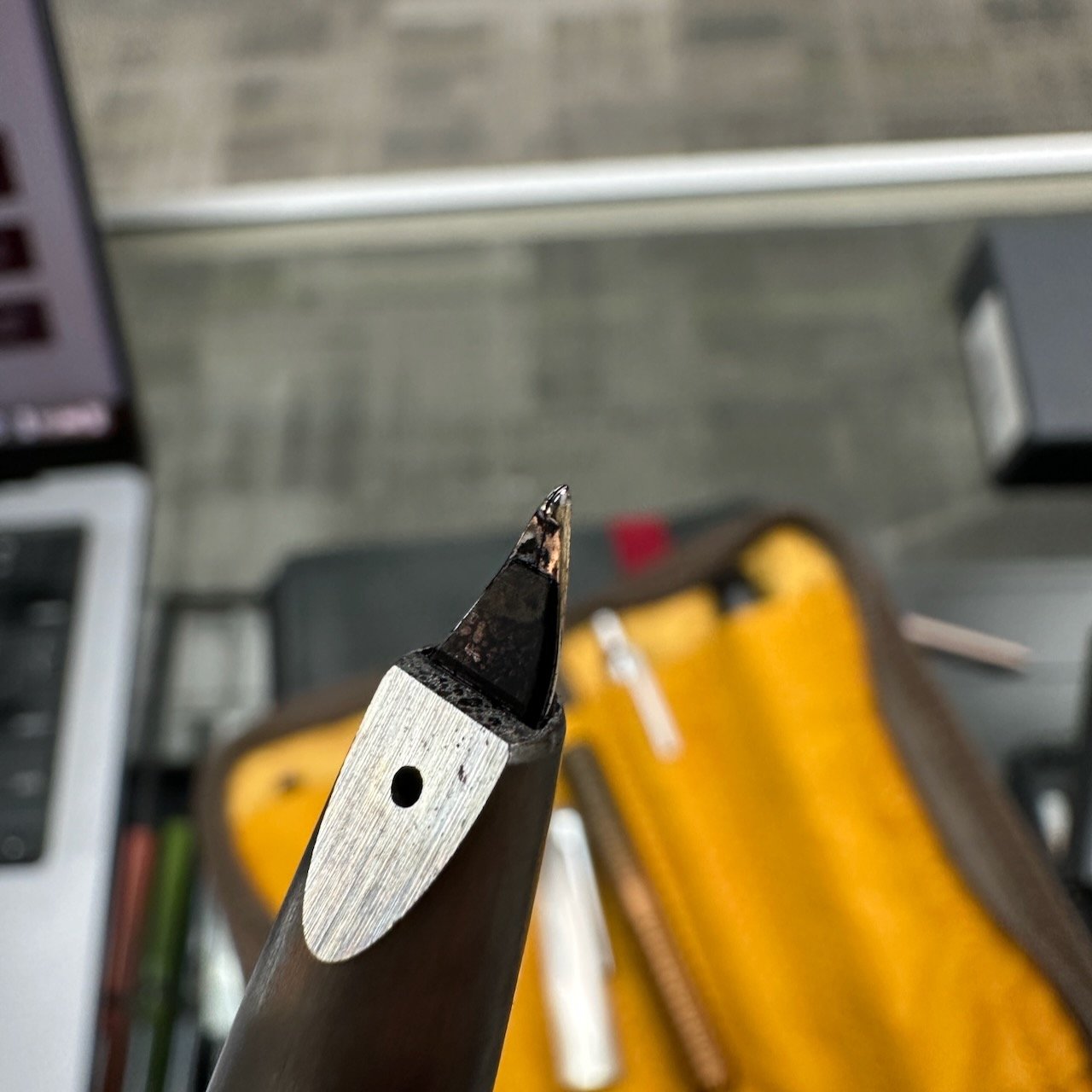So this year at the Arkansas Pen Show, I decided to do something a little different, and filmed a video of Matthew Chen of Matthew’s Nib Works grinding a broad Pilot nib into a Kodachi (his take on the Naginata-Togi style grind that has become so popular lately). In this video, I show Matthew grinding the nib, and I also filmed the post-grind testing process and talk a bit about how the Kodachi is shaped and how the nib writes.
The Kodachi grind on my Lamy 2000 Stainless Steel.
For those interested in reading more about Naginata/Kodachi grinds, you can check out my review of Gena Salorino’s (Custom Nib Studio) “Perspective” grind, which has similar features. My prior video breaking down my Arkansas Pen Show “haul” also had a couple of Kodachi grinds featured - both from Matthew - though they are not the exact pens featured in today’s release. I hope you enjoy, and I have at least one more video of pen show content on the way!
If you enjoy our content, consider supporting us by purchasing directly through the T.G.S. Curated Shop, or by pledging via Patreon.



